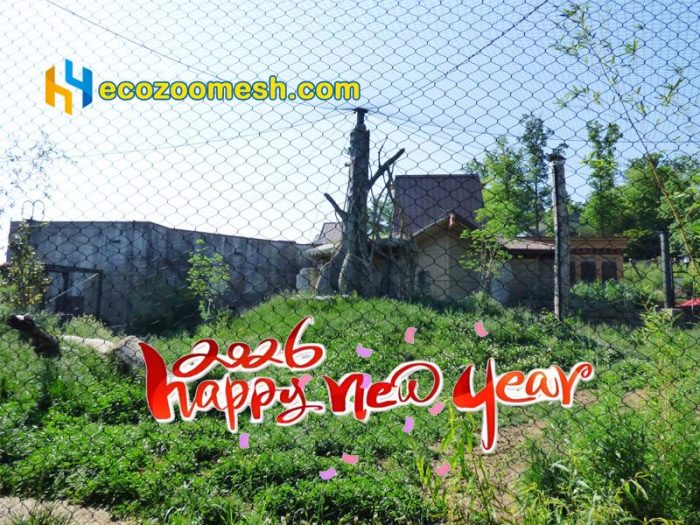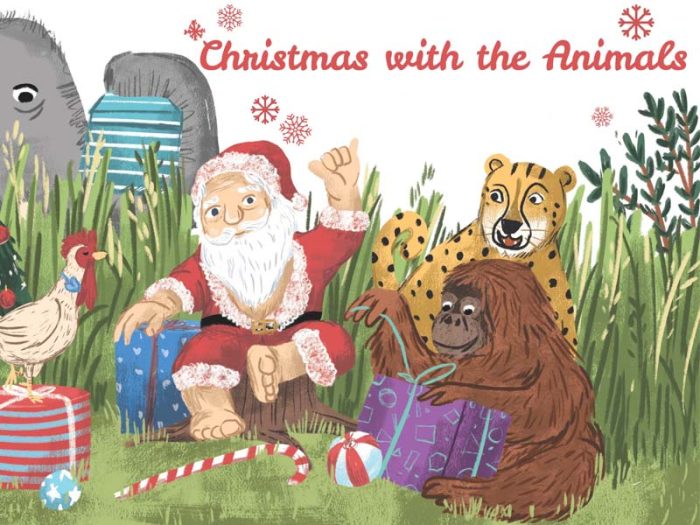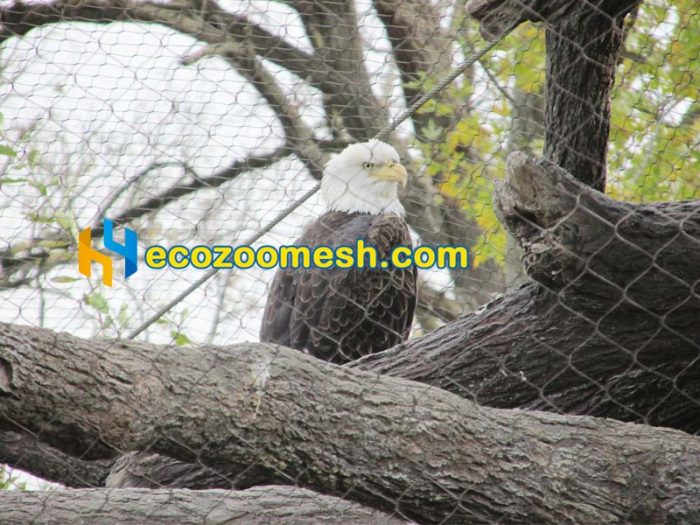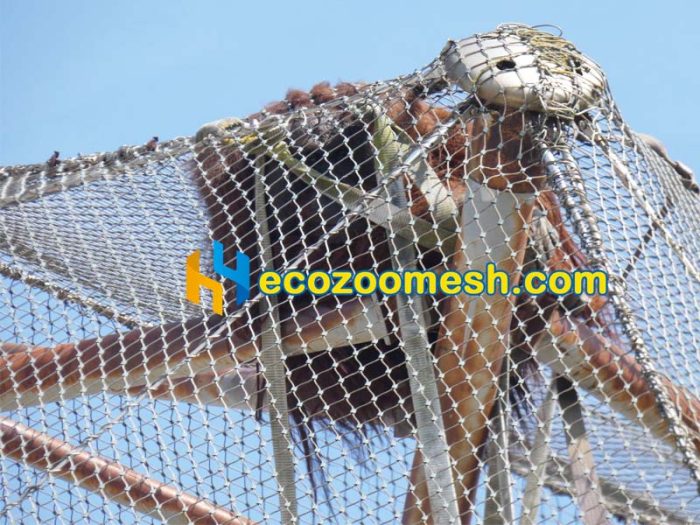Woven Wire Mesh for Zoo Exhibits

Cable Mesh for Birds Aviary Order Shipping
2025-07-09
Ferrule Wire Mesh Order Shipping to Romania
2025-07-29Woven Wire Mesh for Zoo Exhibits
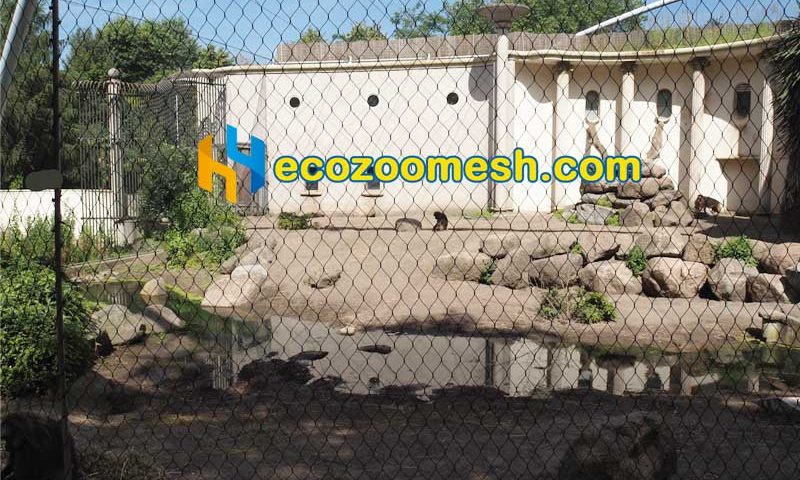
Woven Wire Mesh for zoo exhibits: The Revolutionary Choice for Modern Zoo Fencing
Woven wire mesh for zoo exhibits is the perfect combination of safety, aesthetics and durability.
In the design of modern zoos, the balance between animal safety, visitor experience and long term operating costs has been a major concern for the industry. Traditional iron fencing, galvanized wire mesh or nylon rope mesh, while less costly. But they often struggle to meet high standards of durability, safety and aesthetics. Stainless steel woven rope mesh is becoming the preferred fencing material for high-end zoos around the world and is gradually showing irreplaceable advantages due to its high-strength, corrosion-resistant, and animal-friendly properties.
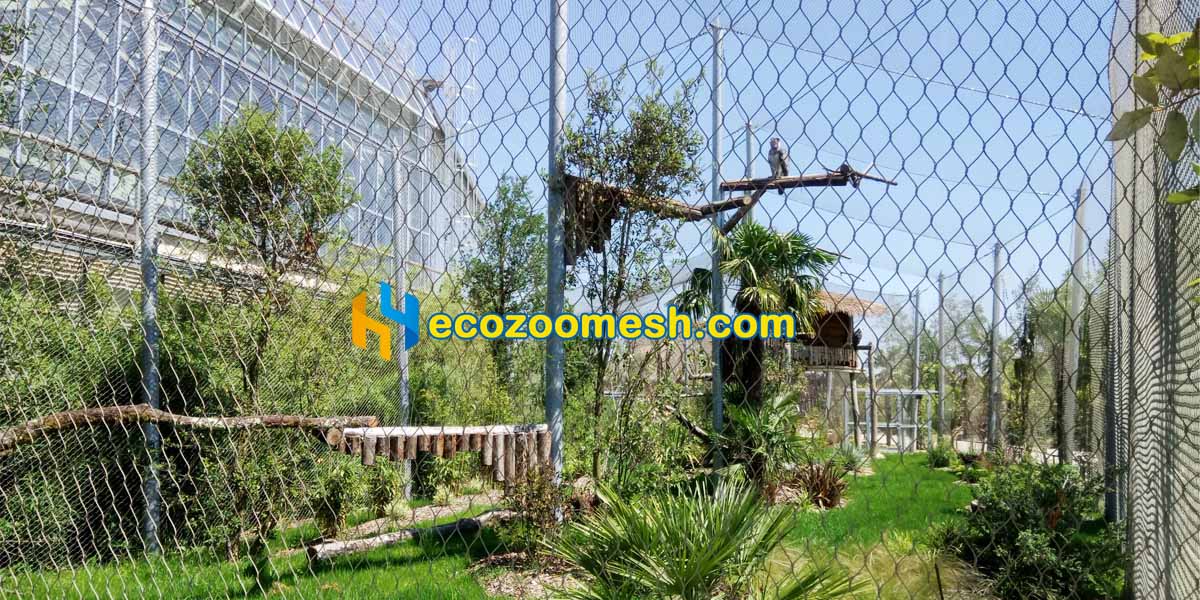
Core Advantages of Stainless Steel Woven Rope Fence
Excellent Strength and Safety
Woven Wire Mesh for Zoo Exhibits – Stainless Steel Woven Rope Fence is made of 304 or 316 stainless steel wire multi-stranded weaving, with a tensile strength of more than 1,000MPa. That is able to withstand the violent impacts of large animals (such as big cats, orangutans, bears, and raptors), effectively preventing the animals from escaping or the fences from breaking. Its unique flexible structure can also buffer the impact force, reduce the risk of injury to animals. The woven cable mesh compared with the rigid metal fence is more in line with the requirements of animal welfare.
Super corrosion resistance, life expectancy of up to 30 years
Zoo environment is humid, often in contact with animal excreta, detergents and rain. Ordinary metal mesh is prone to rust and aging. And stainless steel woven wire mesh (especially 316 material) has a strong resistance to acid and alkali, salt spray resistance. Even in the seaside or high humidity areas it can maintain stable performance. The service life of up to 20-30 years, much higher than the galvanized mesh (5-10 years) and nylon mesh (2-3 years).
Animal-friendly design for enhanced welfare
– Anti Claw Hook Structure: Smooth stainless steel wire surface avoids animals (e.g. monkeys, birds) from being hooked when climbing.
– Transparent visibility: woven wire mesh design allows animals to maintain natural social behavior and reduces the feeling of oppression.
– Non-toxic and environmentally friendly: Stainless steel material does not release harmful substances and is suitable for animals (e.g. rodents, parrots) that are prone to chewing.
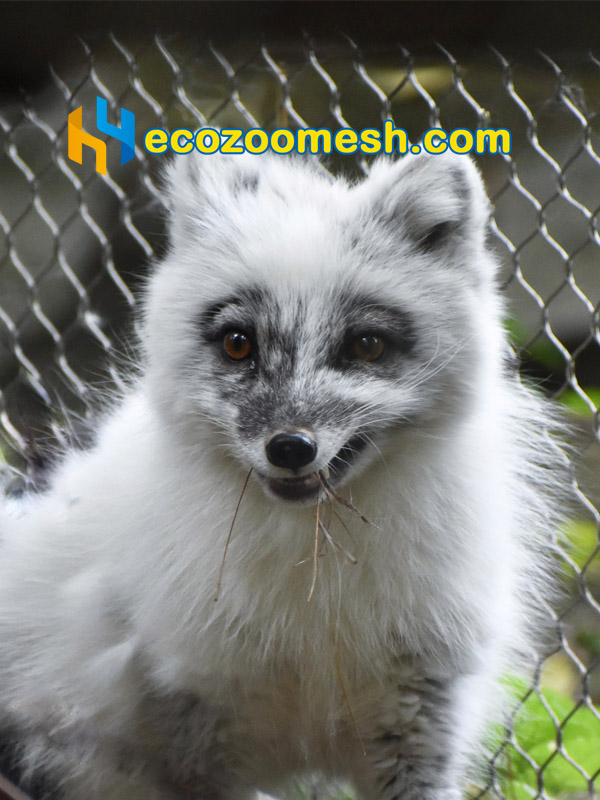
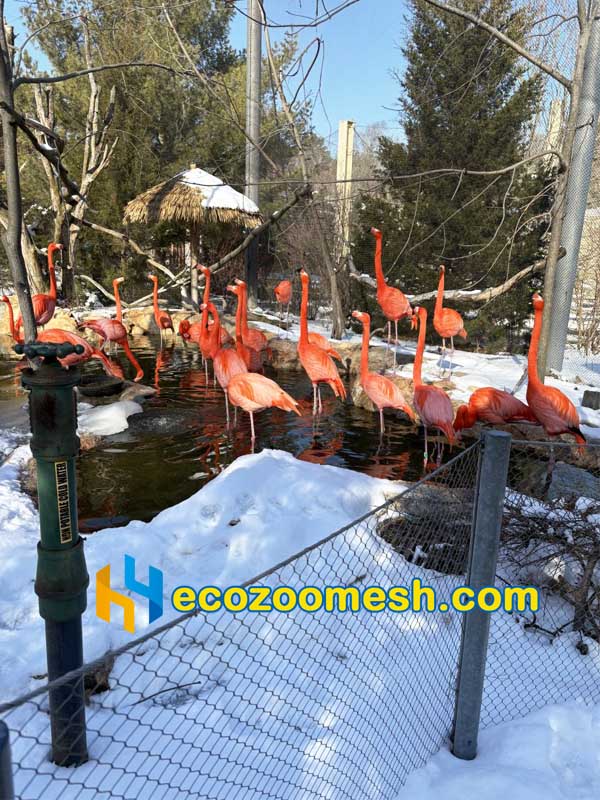
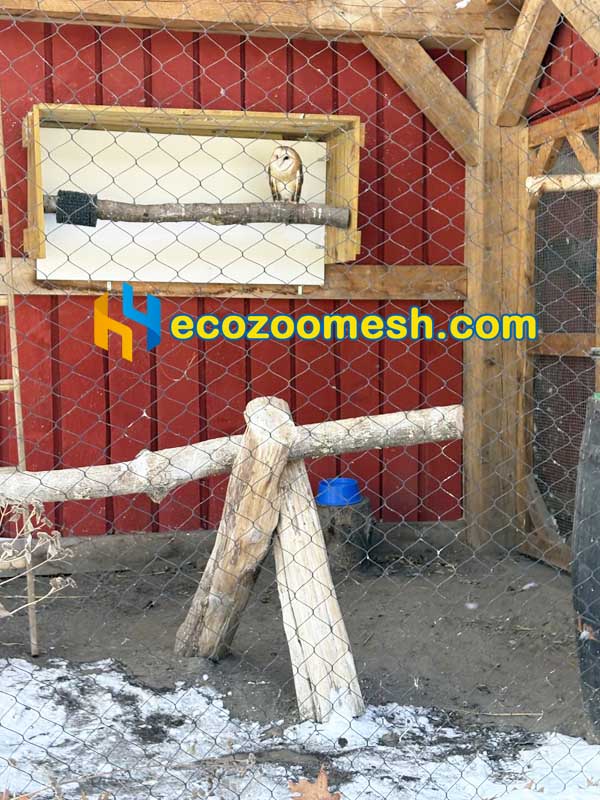
Enhance visitor experience and create an “invisible fence”
While traditional iron fencing affects the viewing effect, stainless steel woven wire mesh creates a “visual invisibility” effect from a distance by virtue of its extremely fine wire diameter (as low as 1.5mm) and customized perforations. This allows visitors to have a more immersive viewing experience. visitors a more immersive viewing experience. In addition, the rope mesh can be customized with coatings such as black to blend perfectly with the natural environment and enhance the aesthetics of the exhibition area.
Low Maintenance, Better Long-Term Economy
Well, maybe the initial cost of stainless steel woven rope mesh is higher (about 3-5 times that of galvanized mesh). However, its maintenance- and replacement-free nature dramatically reduces long-term operating costs. It can be rinsed directly with high-pressure water gun when cleaning. And it is resistant to corrosion by disinfectants. This is especially suitable for animal exhibition areas with strict hygiene requirements.
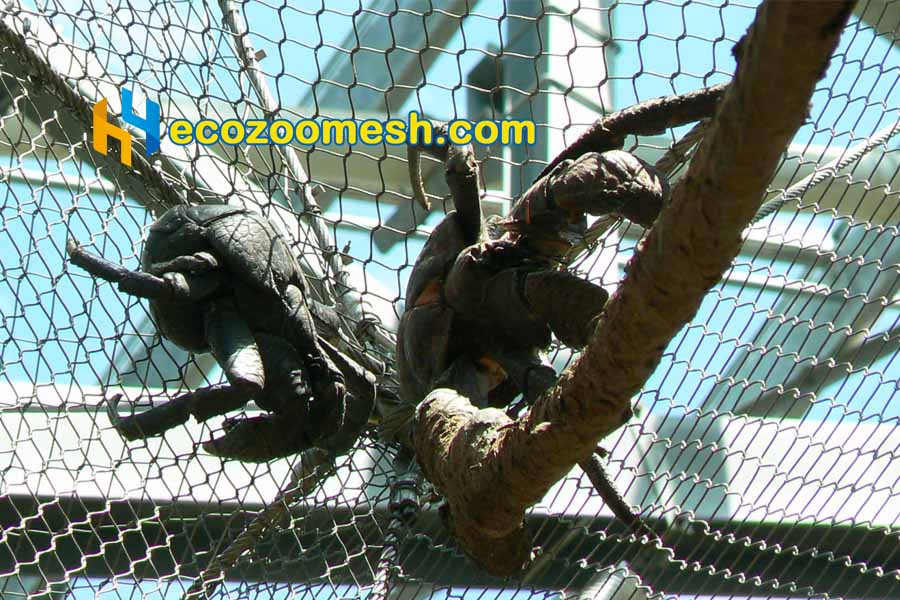
GLOBAL TRENDS IN ZOOS
Standard in high-end zoos in Europe and America
In North America and Europe, stainless steel woven wire mesh has become the benchmark choice for modern zoos. For example:
– Smithsonian National Zoo, USA: Stainless steel mesh is used to build primate exhibits to ensure safety and richness of animal behavior.
– Royal Burger Zoo in the Netherlands: the use of 316 stainless steel woven rope mesh to build a super 50-meter span of the aviary. It was taking into account the strength and lightness.
Australia, the Middle East: corrosion resistance promote the applications
In coastal or high temperature and high salt areas (such as Sydney Taronga Zoo, Dubai Zoo), 316 stainless steel woven wire mesh because of its resistance to salt spray corrosion ability to become the preferred choice. And at the same time to meet the fire requirements.
Accelerating Popularity in Asian Markets
Advanced zoos in China and Singapore (e.g. Beijing Zoo, Jurong Bird Park in Singapore) have adopted stainless steel woven wire mesh in new exhibits. It is gradually replacing the traditional galvanized mesh and steel reinforced structures.
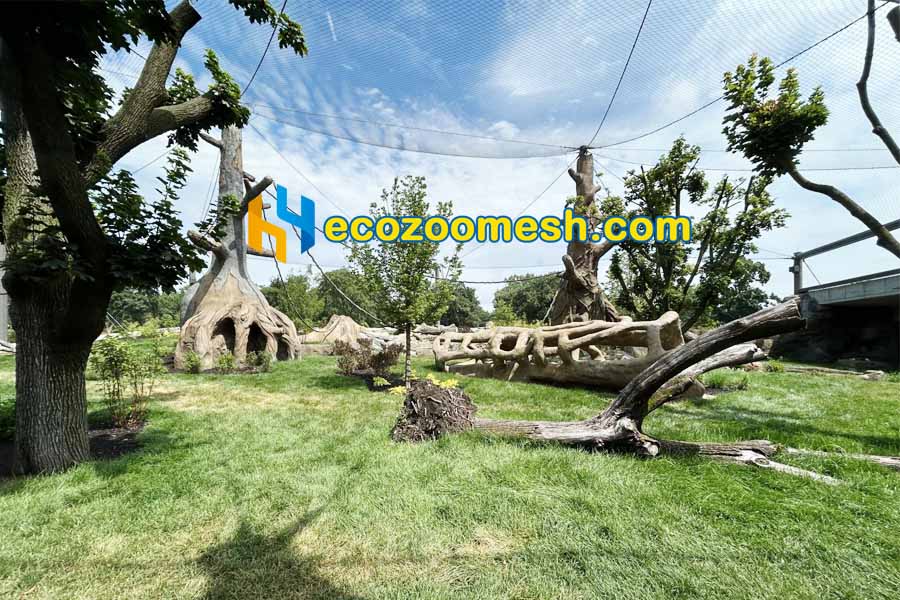
Irreplaceability of Stainless Steel Woven Rope Mesh
Disadvantages over Traditional Materials
| Material | Lifespan | Safety | Corrosion Resistance | Maintenance Costs | Applicable Scenarios |
| Woven wire mesh | 20-30 years | Extreamely high | Extreamely Strong | Low | High-end Zoos, Harsh Environments |
| Galvanized wire mesh | 5-10 years | Medium | Medium | Medium | Zoos with Limited Budgets |
| Nylon Rope Mesh | 2-3 years | Low | Poor | High | Temporary Exhibit Areas |
Future trends in the industry
– Animal behavioral research is driving more flexible and secure fence designs. And stainless steel woven wire mesh is becoming an important part of Enrichment.
– Visitor experience to upgrade the demand for “no fence” design popularity. Stainless steel woven wire mesh because of its invisible characteristics are highly favored.
– Eco-friendliness and sustainability require recyclable materials. And stainless steel is 100% recyclable, meeting Green Zoo standards.
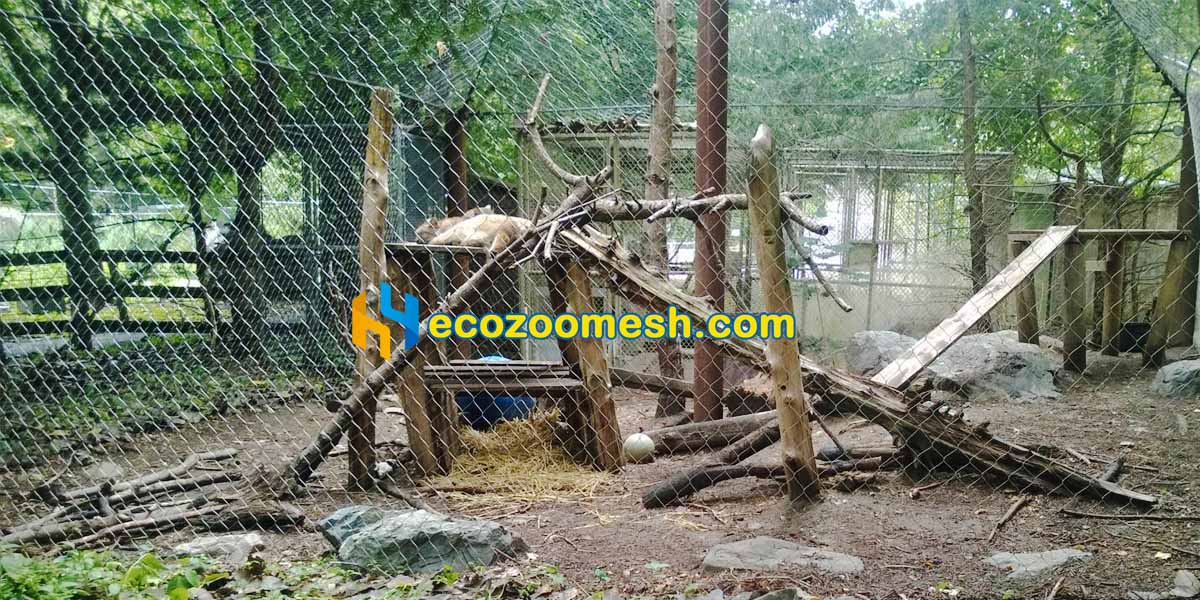
Stainless Steel Woven Wire Mesh – The Future of Zoo Enclosures
As the zoo industry continues to demand higher levels of animal welfare, safety standards and visitor experience, stainless steel woven wire mesh is becoming an irreplaceable enclosure solution due to its high strength, ultra-long life, low maintenance and aesthetics. Despite the high initial investment, its long-term affordability and superior performance make it the preferred choice for high-end zoos and is set to gain further popularity globally.
If you are planning a zoo enclosure upgrade or a new exhibit, stainless steel woven rope mesh is the best choice for safety, aesthetics and durability!
(The data in this article refers to the International Zoo Design Association (IZDA) and the world’s well-known zoo cases. If you need customized solutions, welcome to contact us for professional advice).
Emails: [email protected] / [email protected]


